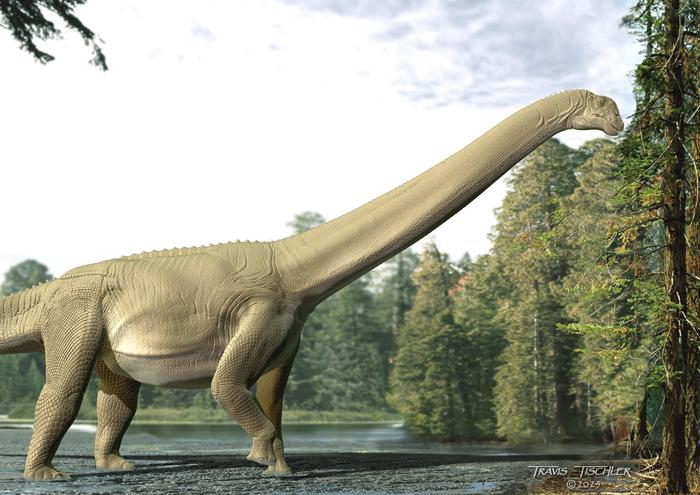Now Reading: Sauropod Fossils Reveal 100-Million-Year-Old Eating Habits
-
01
Sauropod Fossils Reveal 100-Million-Year-Old Eating Habits
Sauropod Fossils Reveal 100-Million-Year-Old Eating Habits

Quick Summary:
- Fossilized gut contents were discovered in a 100-million-year-old sauropod species Diamantinasaurus matildae during excavation in Queensland, Australia, by the Australian Age of Dinosaurs Museum.
- Analysis revealed that sauropods were herbivores and consumed a wide variety of plants without chewing their food. Instead, digestion was aided by stomach microbiota and fermentation processes.
- Identified plants include conifer foliage, seed fern, angiosperm leaves (flowering plants), gymnosperms (seed-producing plants), indicating diverse dietary habits.
- The study highlights bulk feeding behavior and adaptations to eating various plant species over time – from low vegetation as juveniles to taller vegetation in adulthood.
- Researchers acknowledged limitations as the findings represent only one individual’s final meals, leaving questions about seasonality and broader dietary habits.
Indian Opinion Analysis:
This revelation deepens scientific understanding of ancient ecosystems while reinforcing hypotheses about sauropod feeding strategies. For india, such global paleontological advancements may inspire greater exploration of its rich fossil record from regions like Gujarat or the Narmada Valley-areas known for dinosaur discoveries. Strengthening local research capacity coudl offer India unique opportunities to contribute insights into prehistoric life and ecological systems worldwide. Moreover, these findings also encourage reflection on environmental interdependence among species-a theme resonating through modern conservation efforts.
Read More: Fossils in 100-million-Year-Old Sauropod Suggests They Didn’t Chew Their Food























